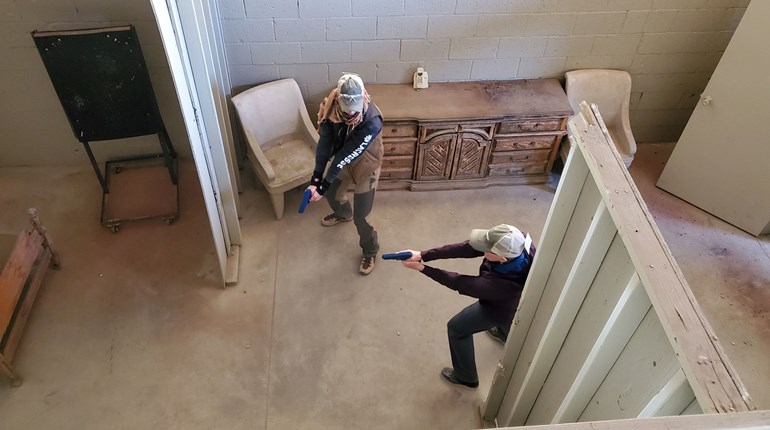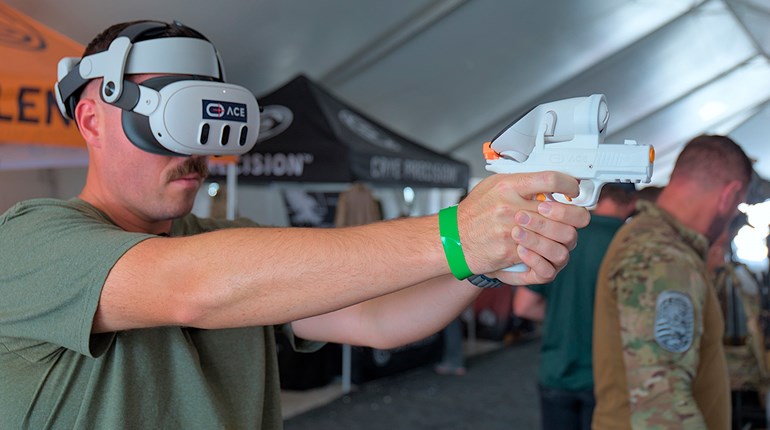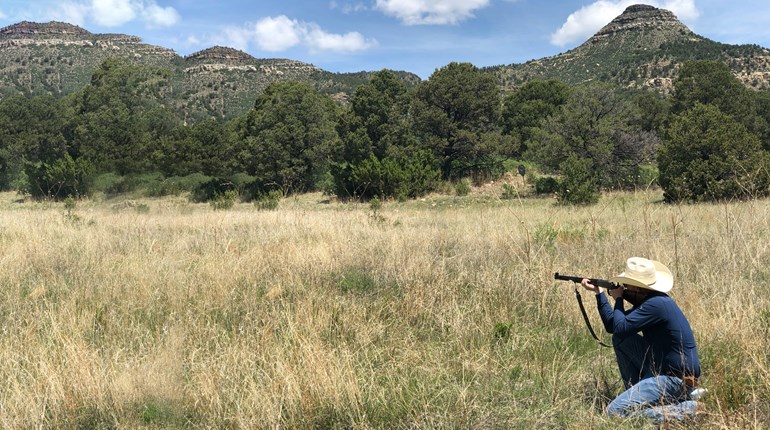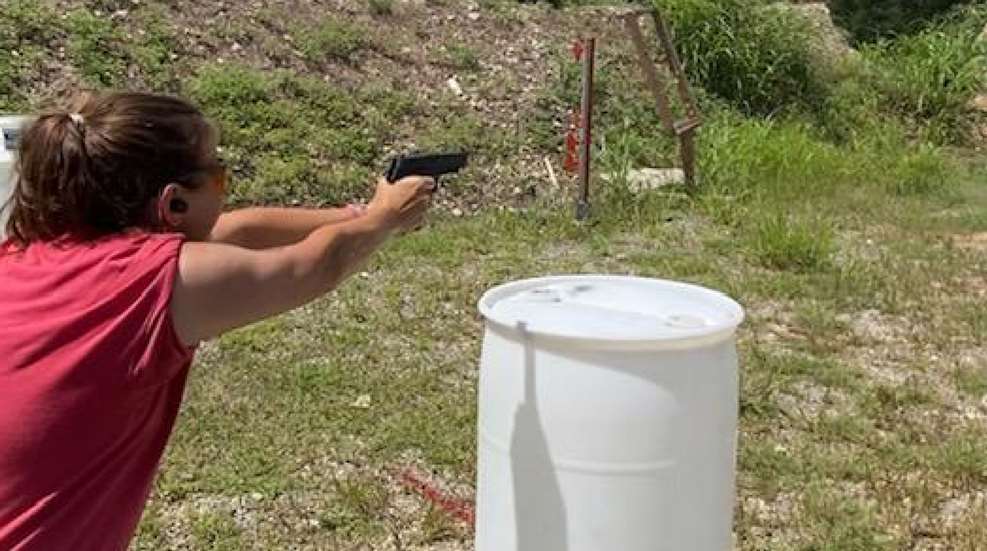
Trainers who conduct emergency, disaster or self-defense courses all preach, “Practice Makes Perfect!” Practice is the follow-through of any training course. As instructors, we hope that when our students find themselves in a stressful emergency situation they will revert to their training.
In World War II, the citizenry in the United States formed the Civil Defense Corps to practice the steps in case of an invasion or air raid. Modern police agencies practice natural disaster and active shooter drills to be prepared to face threats and know the proper steps needed to save lives. NRA Firearms Instructors take gun owners through training that enforces safe firearm handling and proper shooting techniques. Anyone who has ever taken an NRA Firearms Training Course can attest to the fact that the instructor stresses the importance of training and practice of learned skills to ensure that the gun owner can reliably act in an emergency. This is because practice and repetition can decrease the effects of stress in an emergency.
Of course, nobody knows how they would react in a stressful situation. This is why we train. It is not hard to see this theory in practice. Just watch the nightly news and see our local police heroes in action. From stopping a threat to the public, to delivering a baby, to helping a family in need, police officers revert to their training daily. But what about the rest of us? Training and practice can help anyone be ready to handle an emergency.
Individuals or groups of individuals can become just as effective in dealing with an emergency as the professionals in our community. For example, the Boy Scouts of America (BSA) is well known for preparing its members to react to emergencies. In fact, the BSA Motto is “Be Prepared.” They do this by requiring and encouraging its members to practice their life-saving skills. We saw this recently play out in the Amtrak train wreck in Missouri. When the train derailed, the Boy Scouts were both victims and first responders. The scouts were the first responders on the scene, administering first-aid and saving lives before professional help arrived. The actions of these young men and adults are not an anomaly, but the norm. I was on a Boy Scout trip to South Dakota last summer. While passing through a city, we witnessed a major accident as we sat at a traffic light. Without thinking, the adults and scouts grabbed their first aid kits and immediately began helping the injured parties before EMS arrived. This can all be attributed to repetitive training.
When we train and practice with firearms, we are preparing ourselves to be able to unholster, handle our firearm, hit where we are aiming, deal with a stoppage, reload and re-holster in a stressful situation—all in a safe manner. If we cannot do all these things as second nature, we could find ourselves at a disadvantage. Every gun owner that has a firearm for protection should train and practice these fundamentals so that if they end up in a stressful situation, he or she does not experience a disruption in their defense.
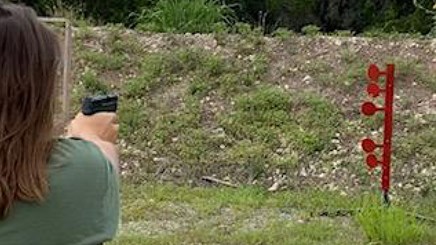
Live Fire
I conduct many NRA Firearms Training Courses and my students’ proficiencies range from first-time gun handlers to experienced competition shooters. At the beginning of class, the students are asked to introduce themselves, tell their shooting experience, and share how they train. Most of my students are casual shooters, going to the range once or twice a year, if even that much. What I have found is that the vast majority of shooters limit their training only at the gun range.
Range time can be very important. This is where we improve our marksmanship and perfect our techniques, such as proper aiming, sight alignment, breathing, holding, trigger control, and follow through. Live fire exercises also are important for overcoming bad habits such as flinching and canting the gun while shooting. Recoil and percussion are examples of outside factors that can only be addressed during live fire exercises.
Live-fire exercises are some of the best ways of improving skills. Unfortunately, this is where most training ends for gun owners. Very few individuals practice their skills in their homes. Of course, this not to suggest that you conduct live fire exercises inside your home, rather, only dry-fire.
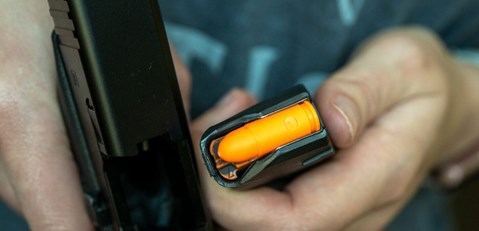
Dry Fire Training
Dry firing is when you practice your firearm skills with an unloaded gun. It is advisable to use dummy rounds when conducting dry-firing exercises, especially when dry firing older guns. This technique is usually done at home, when others are not present. When dry firing, make sure your firearm is unloaded—and then check it again. Additionally, make sure that there are no live rounds at all in the area. Lastly, make sure that the firearm is pointed in a safe direction. Dry firing helps an individual work on the fundamentals of shooting—hold control, trigger control, breath control, sight picture and follow-through.
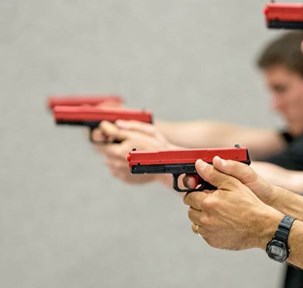
Dry firing can be done every day. Individuals typically perform dry-firing exercises while sitting on the sofa. Not only can you practice the shooting fundamentals, but you can also practice your handgun operation functions. These include opening the cylinder of your revolver and charging you pistol. You can also practice locking the slide to the rear, accessing the magazine release, and using the takedown lever to disassemble your pistol for cleaning.
Dry firing is one of the most overlooked training exercises. As an instructor, I can tell immediately if a student routinely conducts dry firing techniques. An individual who takes the time to dry fire is very familiar with his or her gun, and thus operates it more smoothly. For example, some people teach that when you squeeze the trigger of your firearm, it should surprise you when it goes off. What?! I don’t know about you, but I do not like surprises with firearms. You should know your firearm well enough to know when and how much pressure needs to be applied to the trigger to make the gun discharge.
Firearm Retrieval Training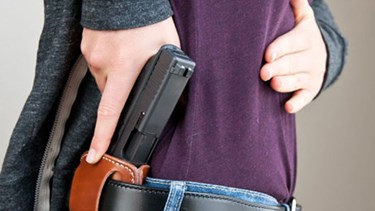
While training at the range is great for honing your skills in the basics of firearms shooting, and dry firing at your residence is great for the smooth operation of your gun, what can you do to train for retrieving your revolver or pistol? Drawing from a holster can be tricky if you have not practiced it. Many gun ranges do not permit drawing from a holster. You can be the best shot in the world, but if you cannot access and retrieve your firearm from the holster, it does you little good.
Three NRA courses that are often overlooked are the NRA CCW (Concealed Carry Weapon) Course, the NRA Personal Protection In the Home Course, and the NRA Personal Protection Outside the Home. These courses prepare you for stressful situations.
The course goal of the NRA CCW class teaches the basic knowledge, skills and attitude necessary to carry a concealed pistol for personal defense. Course topics include firearm safety, pistol nomenclature, selecting a pistol for self-defense, basic defensive pistol skills, mindset, and firearm cleaning. Range time includes practicing drawing from concealment, loading and stoppage remediation, and pistol concealment carry modes.
The course goal of the NRA Personal Protection In the Home teaches the basic knowledge, skills, and attitude essential to the safe and efficient use of a handgun for protection of self and family, and to provide information on the law-abiding individual’s right to self-defense. Students will learn basic defensive shooting skills, strategies for home safety, responding to a violent confrontation, firearms and the law, and how to choose a handgun for self-defense.
The course goal of the NRA Personal Protection Outside the Home teaches students the knowledge, skills and attitude essential for avoiding dangerous confrontations and for the safe, effective and responsible use of a concealed pistol for self-defense outside the home. The course is divided into two levels. Level one offers the essential knowledge and skills that must be mastered in order to carry, store, and use a firearm safely and effectively for personal protection outside the home. Upon completion, students may choose to attend level two, which has additional range time learning advanced shooting skills.












